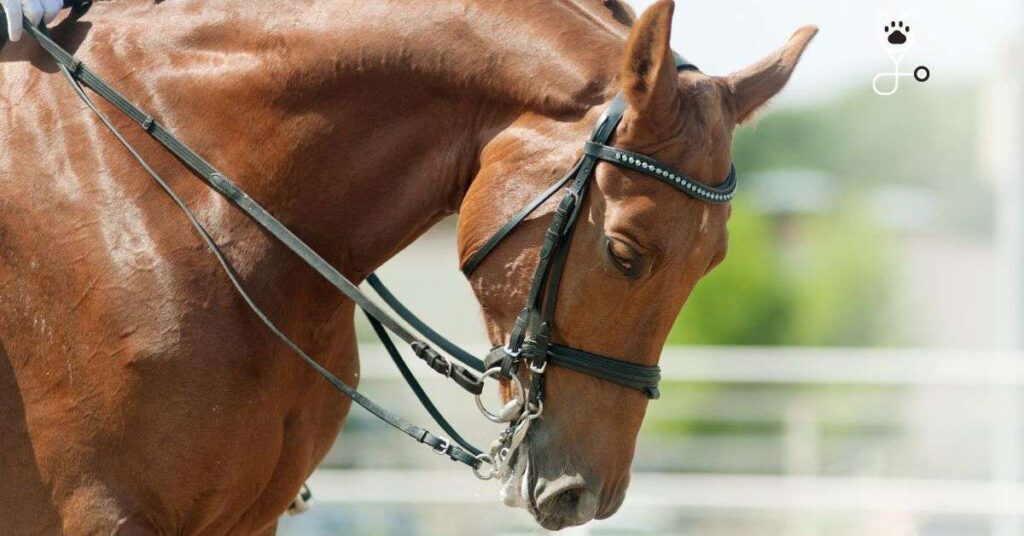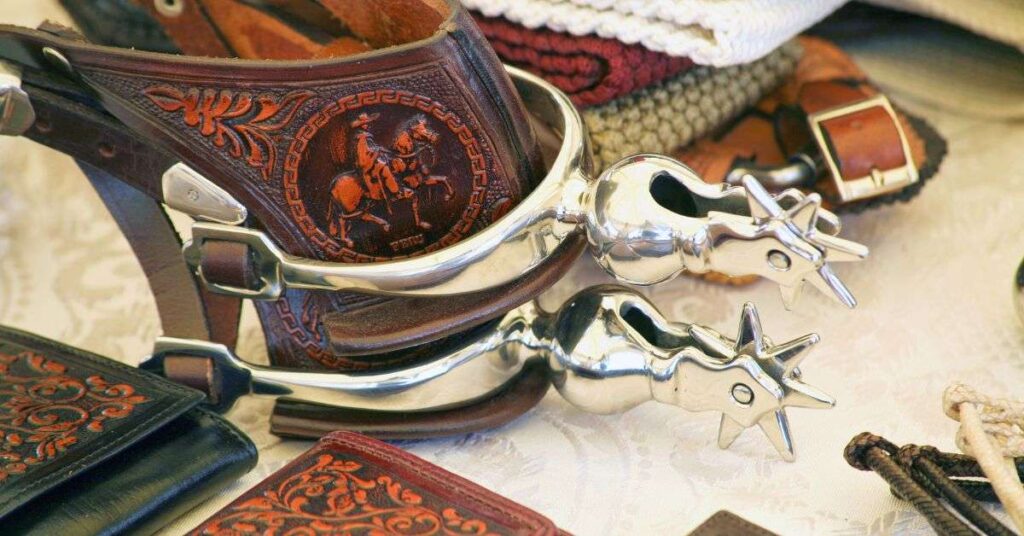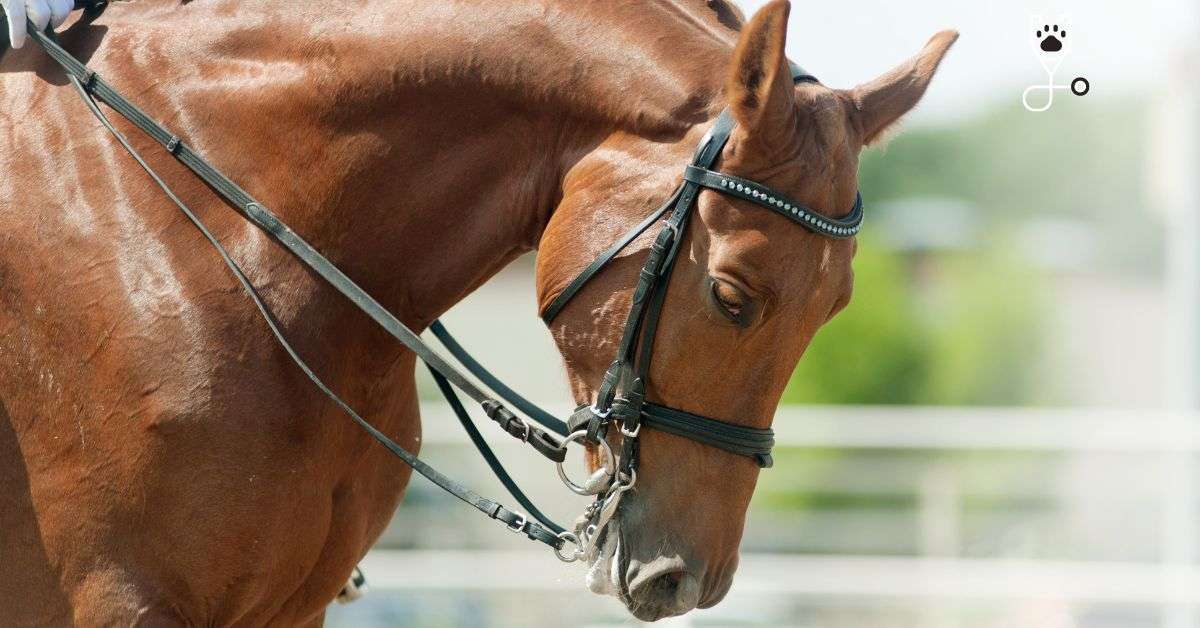Do you need to train your horse? Are you looking for a way to make the process a bit easier? If so, you may want to consider using horse training tools like spurs. Spurs can be helpful in getting your horse to focus and obey your commands. However, it is important to use them correctly in order to avoid causing any harm. In this article, we will discuss the basics of using spurs and provide some tips on how to properly use them. Keep reading for more information.

What Are Spurs Used For?
Spurs are most commonly used for two purposes: to cue the horse and to provide reinforcement. When used correctly, spurs can help the rider communicate their commands more effectively. They can also provide a gentle reminder for the horse to obey.
Additionally, spurs can be used as a form of positive reinforcement. For example, if the horse responds well to a command after being cued with the spur, then the rider may give them a treat.
This will help teach the horse that they are doing what is desired and will encourage them to continue obeying commands when cued with the spur in the future.
Learn More About Horse: The Ultimate Guide To Ownership & Care
A Spur-Trained Horse Is More Responsive
When used correctly, spurs can help make your horse more responsive to your commands. This is because the horse will learn that they need to obey your commands in order to avoid being poked by the spur.
As a result, they will be less likely to disobey or ignore your commands in the future. Additionally, a horse that is trained with spurs will be more responsive to other cues, such as the reins and voice commands.
This is because they will have learned that they need to pay attention to all cues in order to avoid being poked by the spur.
Do Spurs Hurt Horses?
Spurs do not inherently hurt horses. However, they can cause discomfort if used incorrectly. For example, if the rider pokes the horse too hard with the spur, it may cause the horse to flinch or jump.
Additionally, if the rider uses the spur excessively, it can irritate the horse’s skin.
To avoid causing any discomfort, it is important to use spurs correctly and only when necessary.

Rowelled Horse Spurs
Rowelled spurs have a small, circular piece of metal on the end of the spur. This metal is known as a rowel. Rowels come in different sizes and shapes, but they all serve the same purpose: to provide gentle stimulation when touched against the horse’s side.
Some rowels are blunt, while others are sharp. The type of rowel you use will depend on your preference and the horse’s response.
If you are unsure which type of rowel to use, it is best to start with a blunt one and then progress to a sharper one if necessary.
Learn More: Horse Training Tools: Martingales
Hunting Spurs
Hunting spurs are longer than rowelled spurs and do not have a rowel on the end. Instead, they have a small point or hook. Hunting spurs are typically used for horses that are being ridden in hunts or other situations where more stimulation is necessary.
They are also often used on horses that are difficult to control.
When using hunting spurs, it is important to be careful not to poke the horse too hard with the point or hook. This can cause the horse to become agitated and may even lead to them bucking off the rider.
Dressage Spurs
Dressage spurs are similar to rowelled spurs, but they have a longer shank. The longer shank makes them more difficult to use and can cause more damage if used improperly.
As a result, dressage spurs should only be used by experienced riders who are confident in their ability to use them correctly.
Additionally, dressage spours should only be used on horses that are responsive to gentler forms of stimulation, such as the rowelled spur.
Jump Spurs
Jump spurs are similar to hunting spurs, but they have a longer shank. Like dressage spurs, jump spurs can cause more damage if used improperly and should only be used by experienced riders.
Jump spurs are typically used on horses that are difficult to control or that need more stimulation in order to jump.
Like hunting spurs, it is important to be careful not to poke the horse too hard with the point or hook on jump spurs. This can cause the horse to become agitated and may even lead to them bucking off the rider.
Read More: How to Make a Stubborn or Lazy Horse Go Forward
Tips for Using Spurs
Now that you know a bit more about spurs and their purposes, let’s discuss some tips for using them correctly:
Start by using the spur on its own without any other cues. This will help the horse understand that the spur is a cue in and of itself.
Use the spur sparingly at first. Only use it when absolutely necessary to get the horse’s attention.
As you continue to use the spur, you can increase the frequency with which you use it. However, be sure not to overdo it, as this can irritate the horse’s skin.
When using the spur, be sure to touch the horse lightly. You should only apply enough pressure to get the horse’s attention without causing them discomfort.
If you find that you are having to use the spur excessively, reevaluate your training methods. There may be a better way to train the horse that does not involve the use of the spur.
Finally, always remove the spur when you are finished riding. This will help prevent the horse from becoming too accustomed to the sensation of the spur and will also help avoid any irritation to their skin.
Read More: How to Stop Wood Chewing in Horses




